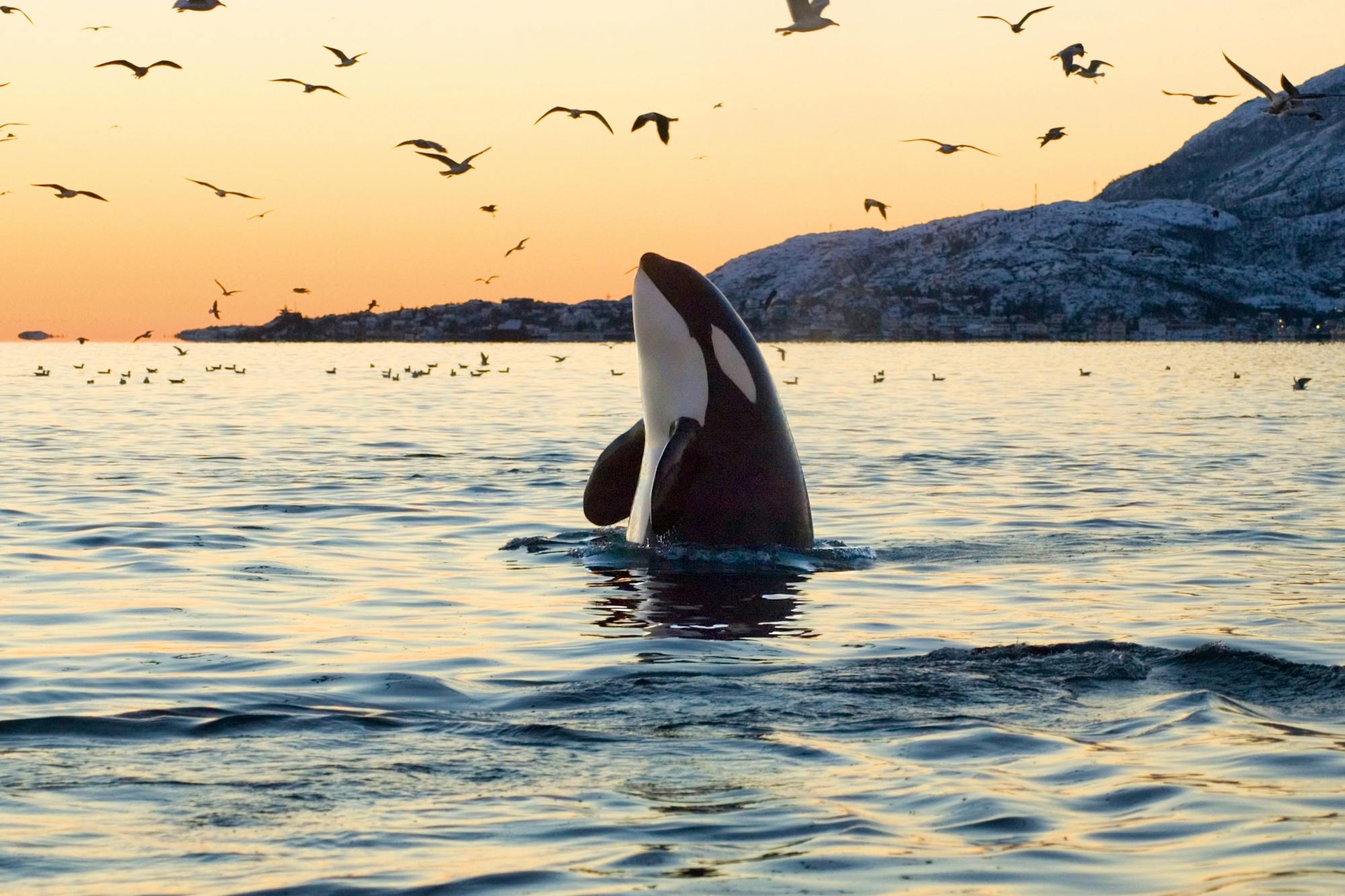The Pacific Northwest is home to many wonderful wildlife species. Within the region, the Puget Sound, which is part of the Salish Sea, is the major inlet located in Washington that connects to the Pacific Ocean. The sound is also home to many beloved and unfortunately endangered species including sea otters, chinook salmon and the Southern Resident orca population. One issue that these species encounter comes in the form of creosote that has leached into the water.
Creosote, also known as coal tar, was commonly used as a wood preservative to prevent the decay of pilings that support docks and piers in the sound. Creosote is the byproduct of the high temperature treatment of coal to make natural gas and other fuel. It is a thick, viscous dark brown liquid with a strong gaseous odor. Approximately 300 chemicals have been identified in creosote and depending on the processing, as many as 10,000 chemicals may be in the mixture. It is also very proficient at its job: protecting wood from insects and salt water. Creosote has been used since 1851 and although it’s now banned for residential use, it is still allowed for some commercial venues.
The creosote that has been used to build, preserve and treat piers, docks, telephone poles, railroad ties and floats throughout the Puget Sound have been leaching toxins into the waters, causing detrimental conditions for marine wildlife of all types. Of all the toxins found in creosote, polycyclic aromatic hydrocarbons (PAHs) are the chemicals of most concern as they are carcinogenic (cancer-forming) and bioaccumulate very easily in organisms — especially long-lived top predators like orcas. When exposed to ultraviolet light or sunshine, the chemicals in creosote become even more toxic and are more likely to leach from the wood.
Piling On
Many species – including a variety of birds, amphibians, mammals and fish along the Pacific Northwest coast are affected by the leached creosote. For example, studies have shown that herring eggs exposed to creosote have a high mortality rate —exhibiting slowed or stalled embryonic development. Herring are one of the main sources of food for chinook and other salmon species, which are, in turn, important food sources for Southern Resident orcas. In fact, Southern Resident orcas rely on chinook salmon for 50% to 100% of their diets, depending on the season.
Studies on PAHs and other chemicals found in creosote show they harm juvenile salmon, stunt growth, deform developing hearts, alter immune systems and harm the fish’s reproductive functions. All it takes is for the fish to migrate through a contaminated estuary for it to become contaminated.
This toxic cocktail of chemicals from creosote is harmful to people too. Exposure to creosote through direct contact on beaches or even through vapors emitted on hot days can also threaten the health of people nearby. Thousands of derelict creosote pilings remain in Puget Sound which wash up regularly along beaches. Some people unwittingly use creosote-treated wood for beach fires and may even cook food with it.
Removing the Risk
The main method of reducing the risks of creosote leaching is to manually remove the offending debris and structures that are scattered in and around the Puget Sound. In Washington, there are two primary programs that serve this purpose: the Creosote Piling Removal Program – headed by the Washington State Department of Natural Resources (DNR), and the Snohomish County Marine Resource Committee (MRC). The MRC has created a prioritization plan for the potential removal of independent pilings in the Snohomish Estuary.
These programs focus their removal efforts on large collections of creosote-treated pilings and, when funding, derelict over-water structures such as piers and docks. Removing the standing piles before they break helps remove the entire source and prevents it from washing up on shorelines further impacting sensitive habitats. Since 2007, the DNR has removed 21,300 tons of creosote – enough to cover 8.3 acres of land.
Since creosote can wash up just about anywhere, citizen science and observation become imperative. MyCoast is an app developed by the Washington DNR and a few other partners and it allows people to document creosote debris, storm surges, king tides, abandoned boats and other large marine debris. The information collected through MyCoast is used to report creosote pilings that need to be removed, characterize beach change, and comprehend the impact of nearshore hazards to enhance awareness among decision makers and stakeholders.
Protecting the Sound is directly tied to protecting, rehabilitating, and recovering our chinook salmon, the southern resident orca, and additional imperiled species such as sea otters and the marbled murrelets (a small endangered seabird that feeds at sea and nests in old growth forests). These species all rely on the waters of the Sound to survive and in turn they play an important part in keeping it vibrant and healthy.
Removing creosote logs from the Puget Sound is tied to the conservation of these species and others. Visit our website to learn how Defenders of Wildlife's Northwest Program focuses on protecting and conserving these species.










